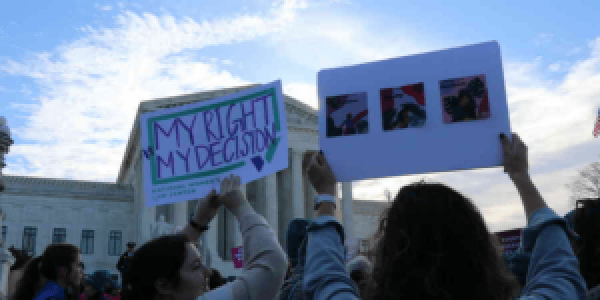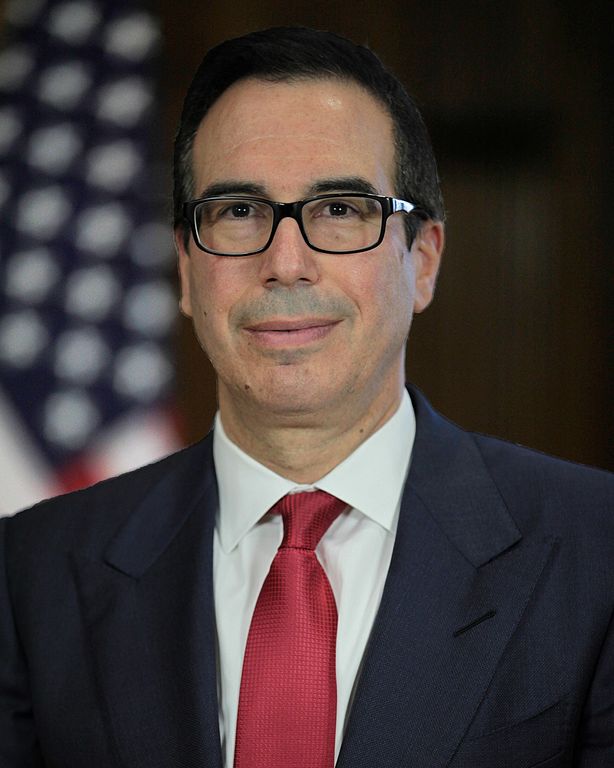Abortion rights, women of color, and LGBTQI+ people are under attack. Pledge to join us in fighting for gender justice.
In 2020, More than 12.6 Million Women and Girls Lacked Health Insurance; Being a Woman Still Raised the Odds of Being Poor in America; and the Wage Gap for Women Overall Narrowed to 83 Cents
(Washington, D.C.) Today, the U.S. Census Bureau released new data on health insurance, poverty, and income from 2020. More than 12.6 million women were left without health coverage last year, putting them at increased health and financial risk due to the combined threats of COVID-19 and an uncertain economy. Women in America continued to be at higher risk for being poor—and women of color remain most at risk. The wage gap for women overall narrowed by a single penny to 83 cents, but even this small change likely reflects a distortion due to the millions of women who left the workforce in 2020, creating an artificial comparison between men’s and women’s wages. Black women and Latinas consistently experience the steepest wage gaps, according to analysis by the National Women’s Law Center.
Health Insurance Coverage
“Data cannot paint the full picture of how fractured our health care system is,” said Dorianne Mason, NWLC Director of Health Equity. “Millions of women lost their jobs during the pandemic, and these numbers reflect that some also lost their health coverage along with their jobs. What’s not revealed in the data are the real experiences of people – including many frontline workers – who are not offered health coverage by their employer, and people who have so few resources that they are forced to choose between their housing or food and medication. It’s time for us to reimagine our health care system and guarantee every person access to quality, comprehensive health care.”
2020 Health Insurance Coverage Toplines:
- Despite more than 92 percent of women and girls having some form of health insurance in 2020, more than 12.6 million remained uninsured.
- Uninsurance rates varied by race/ethnicity:
- Latinx women and girls (16.6 percent) were three times more likely than white, non-Hispanic women and girls (4.7 percent) to be without insurance in 2020.
- 9 percent of Black women and girls were uninsured last year, along with 5.8 percent of Asian women and girls.
- Over one in ten non-elderly adult women were without insurance in 2020, meaning nearly 10.3 million women 19-64 were uninsured last year.
- Over 1 in 9 women of reproductive age (19-54) were uninsured in 2020, meaning more than 8.5 million were without insurance last year.
- Compared to 2013, over 12.2 million more people have health insurance coverage. However, 8.6 percent of people were uninsured in 2020.
***In 2018, Census stopped publishing data that provides analysis of women by race/ethnicity.
***The Census Bureau only counts individuals as uninsured in 2020 if they did not have insurance for all 12 months. There were massive job losses which caused some workers to have lost employer sponsored health insurance coverage at some point last year. However, because they may have had insurance for part of the year, they are not counted among the uninsured and uninsurance rates for 2020 may appear artificially low.
Poverty Snapshot in 2020
“Far too many politicians pretend poverty is a personal choice made by people experiencing hardship, but what we’ve shown in the last year is poverty is a choice made by those very politicians,” said Melissa Boteach, NWLC Vice President of Income Security and Child Care. “After decades of efforts to sabotage our safety net, the pandemic has given us a rare opportunity to see the monumental change we can bring to the lives of people struggling to feed their families, keep their jobs, and stay in their homes. As Congress debates the Build Back Better agenda, we urge them to consider the lessons of this data and enact policies that helped people survive this crisis and will help all of us survive the crises to come.”
2020 Poverty Toplines:
- Nearly 15.1 million women 18 and older, or more than 1 in 9, lived in poverty in 2020.
- Poverty rates were far worse for many women of color: 19.0 percent of Black women and 16.8 percent of Latina women were in poverty last year as compared to 6.8 percent of white, non-Hispanic men.
- Women made up more than 6 in 10 seniors who lived in poverty last year, with the poverty rate for senior women at 10.1 percent.
- Nearly 1 in 3 female-headed families with children were poor in 2020.
- Nearly 6 in 10 poor children lived in a female-headed household last year.
Wage Gap in 2020:
“News that the gender wage gap narrowed slightly last year is unfortunately only a pandemic mirage,” said Emily Martin, NWLC Vice President for Education and Workplace Justice. “The gap tightened not because women were earning more, but because women were disproportionately those who lost their jobs entirely—and those in low-paid jobs were hit the hardest. As the women doing those low-paid jobs—in restaurants, in retail, and as child care workers and hotel housekeepers—left the workforce, the wage gap artificially appeared to be closing. But race and gender wage gaps are still robbing women of tens of thousands of dollars a year. At this moment of a pandemic and continuing economic uncertainty, it’s bitter news for Black women, Latinas, and other women of color who are shortchanged the most. One third of Black women are essential workers who keep the country going, but they are still paid less than men in the same occupations. Over a 40-year-career, many women of color stand to lose more than a million dollars to the wage gap. This is life-changing money. Women and their families simply can’t afford inaction on equal pay.”
2020 Wage Gap Toplines:
- Women working full time, year round were paid just 83 cents for every dollar paid to men in 2020.
- The wage gap was even worse for many women by race/ethnicity:
- Asian women working full time, year round were paid 101 cents for every dollar paid to white, non-Hispanic men.
- Black women working full time, year round were paid just 64 cents for every dollar paid to white, non-Hispanic men.
- Latina women working full time, year round were paid just 57 cents for every dollar paid to white, non-Hispanic men.
- White, non-Hispanic women working full time, year round were paid just 79 cents for every dollar paid to white, non-Hispanic men.
***Between February and April 2020, 22.3 million people lost their jobs, many of whom were low-paid workers. Millions of these workers were unemployed for extended periods of time and millions of others dropped out of the labor force entirely and have yet to return.
***Since wage gaps capture full-time, year-round workers, this year’s data cannot fully capture what happened to wages in 2020. It is not possible to compare this year’s data to previous years since it fails to account for the massive job losses workers, and especially low-paid workers, experienced in 2020.
*** Wage gap data is not yet available for Native American or Native Hawaiian and Other Pacific Islander women.
NWLC will continue to update its analysis here.





